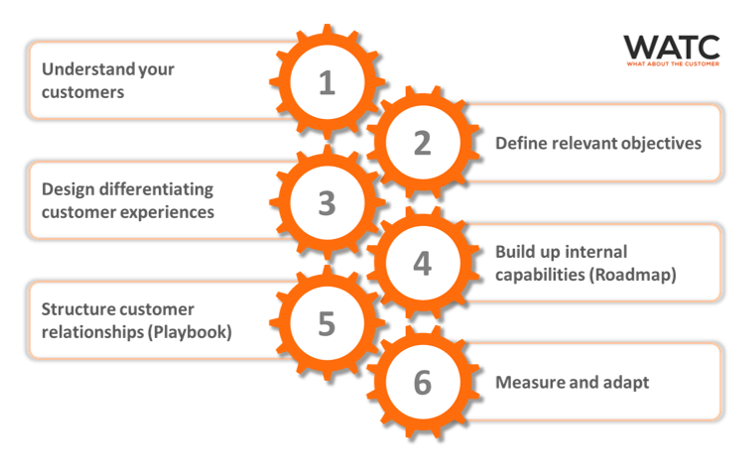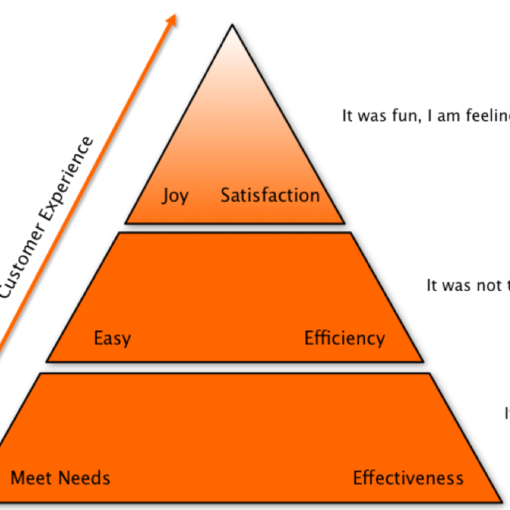Everybody and their dogs seem to be talking about customer experiences and customer experience management nowadays. However, too few people seem to have a good concept of what it really takes to do it successfully. This is why this article summarises the 6 steps of successful customer experience management from our point of view. The process follows the simple logic of all management processes: understand, decide, execute and control.
(Eine Deutsche Version dieses Artikels finden Sie hier.)

1) Understand your customers
Understanding one’s customers and prospects requires actionable information that goes beyond demographics and easily observable behavioural data. It demands – among many others – information like customer needs, decision drivers, touchpoint preference, emotions and involvement. These kinds of insights can only be gained with sophisticated market research toolboxes. One such toolbox is Customer Choice Analysis©. The gathered data is used to segment the population and to map typical experiences in customer journey maps. (Find an article on customer journey mapping here.)
2) Define relevant objectives
It should be obvious that the process of customer experience management should include setting clear objectives with measurable KPIs and target levels. We still want to stress the importance of this point. We observe far too often that the obvious is not always reflected in reality. Objectives should be both economic (e.g. sales volumes, revenues, cost levels, contribution margins, etc.) and behavioural/psychographic (e.g. preference, buying, cross-buying, loyalty, satisfaction, recommendation, etc.). They build the basis for meticulous controlling in step 6.
3) Design differentiating customer experiences
Once insights are gained and mapped and objectives are set, it is time to design the target experiences for each targeted customer segment. Customer experience design is nothing one person can do or should be doing on their own. On the contrary. It makes a lot of sense to include persons and functions into the design process that will be involved in delivering the experience. This can include company-internal staff as well as external partners and providers. It makes even more sense to include customers into the process of designing target experiences. In other words, the process of designing experiences is best done using co-creation techniques.
4) Build up internal capabilities (Roadmap)
We recommend splitting execution into two conscious steps: one for the internal roll-out and one for the external roll-out towards the customer and prospect base. The internal roll-out plan – or roadmap – comprises an overview of what needs to be procured, developed or altered in order to enable the organisation to deliver the target customer experience. It covers elements such as processes, structures, personnel, knowhow/skills, technology/tools, information and culture.
5) Structure customer relationships (Playbook)
The second step of execution is concerned with changing the relationship with one’s customers and prospects. It’s plan – the playbook – answers questions like these (and quite a few more): How will the relationship with our customers change? Which customer-facing processes need to be adapted in which way? What information and sales channels and touchpoints will we need to develop or adapt? Which customer-facing technologies and tools will we use? How will we communicate with our customers and prospects?
6) Measure and adapt
Finally, the successful customer experience manager also needs to be proficient in monitoring the success in achieving the objectives set in step 2 of the 6 steps of customer experience management. She or he will define the right measuring techniques and processes to feel the pulse of the organisation on a regular and continuous basis. She or he will also make sure that corrective action is swiftly taken, if and when needed.
For more information on the topic of customer experience management refer to our wealth of blogs in the fields of customer centricity, customer experiences and customer journey mapping. Or have a look at this interesting article by a professor at INSEAD business school.




